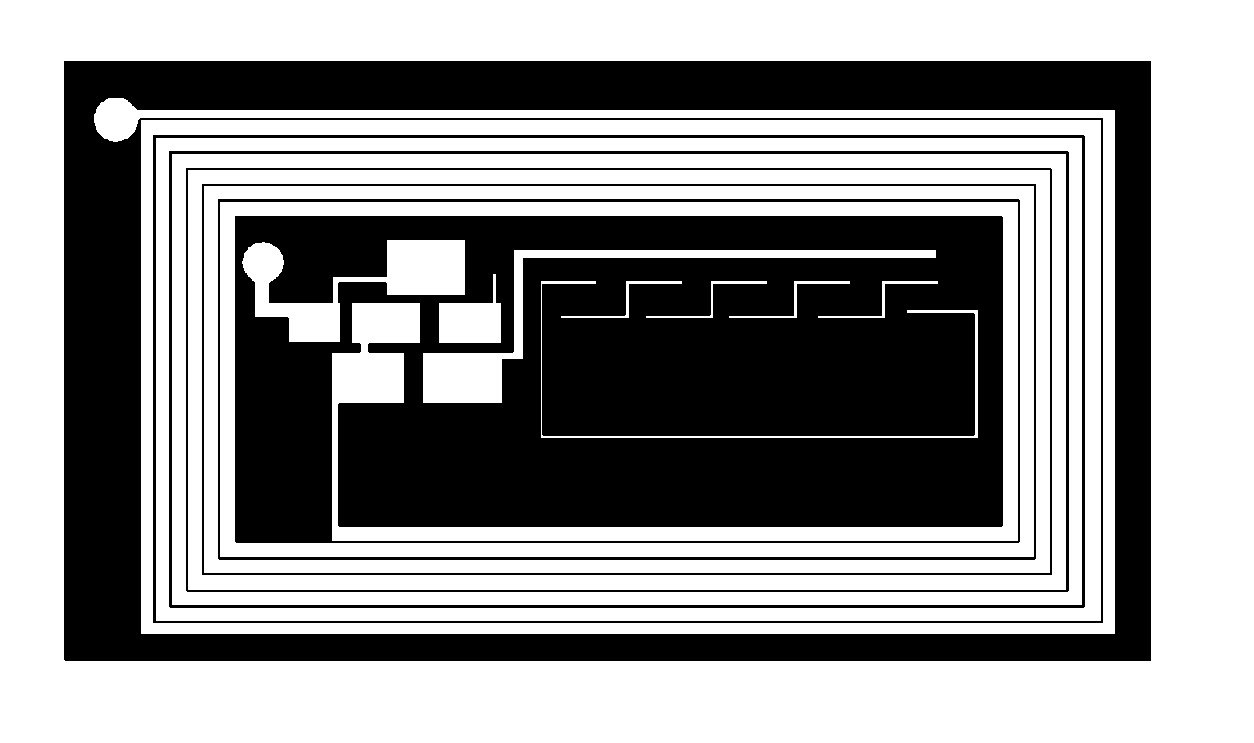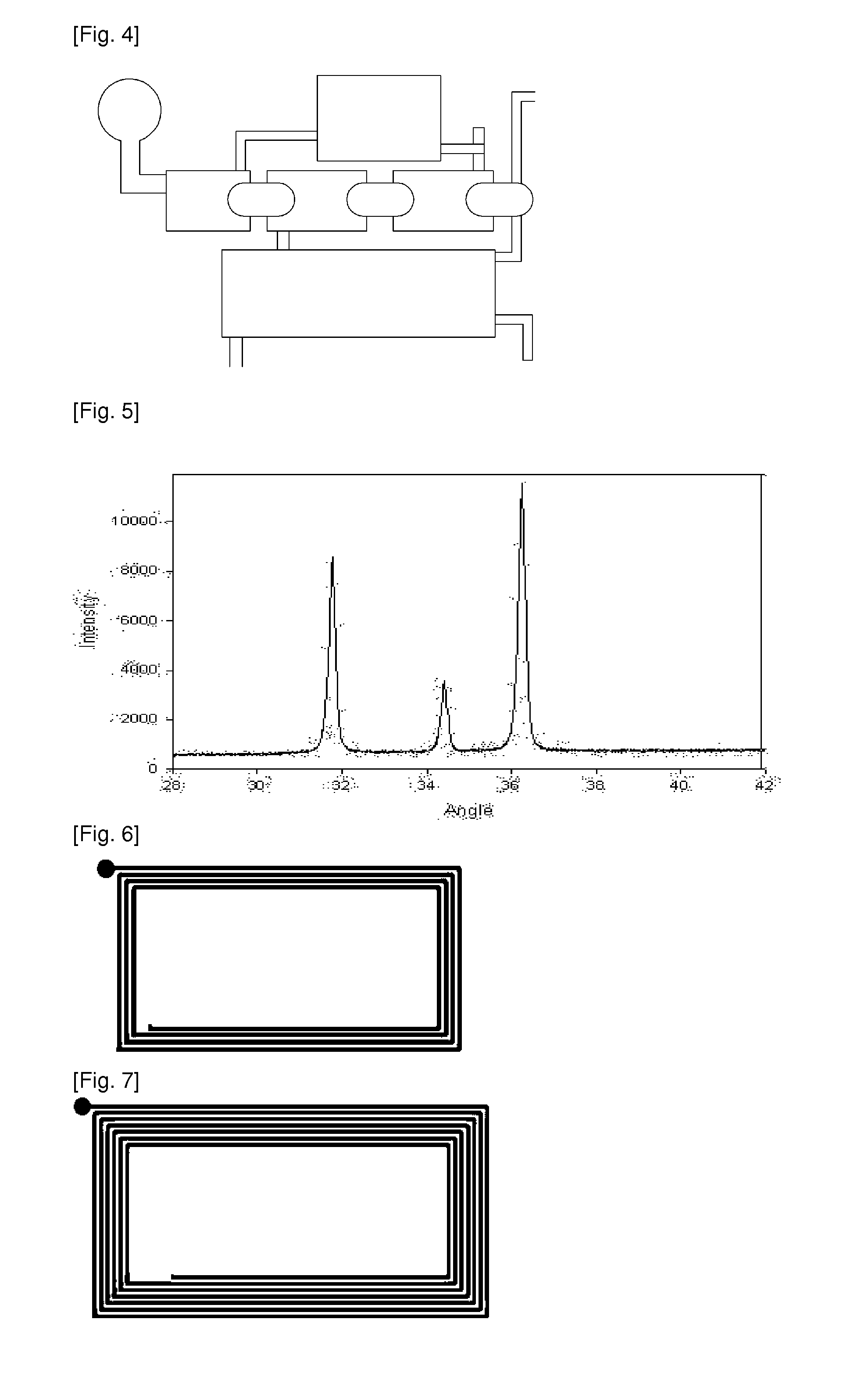RF printing rectifier using roll to roll printing method
- Summary
- Abstract
- Description
- Claims
- Application Information
AI Technical Summary
Benefits of technology
Problems solved by technology
Method used
Image
Examples
example 1
[0055]Zinc acetate (2.66 mol) and cobalt acetate (0.13 mol) were put into a reactor, trioctylamine (25 ml) was added thereto to form a mixture, and then the mixture was stirred in a supercritical state at a reaction temperature of 310° C. for 30 minutes to form a green material on the wall surface of the reactor. This green material was a zinc oxide nanowire doped with cobalt. Subsequently, the green zinc oxide nanowire is added and dispersed in ethanol to form a dispersion solution, and then a solvent and a finally-synthesized zinc oxide nanowire doped with cobalt were separated from the dispersion solution using a centrifugal separator. FIG. 3 is a scanning electron microscope photograph of the synthesized zinc oxide nanowire.
[0056]FIG. 5 is a graph showing the results of X-ray diffraction analysis of the zinc oxide nanowire. The separated zinc oxide nanowire doped with cobalt was powdered. The separated zinc oxide nanowire doped with cobalt was mixed with polyaniline at a mixing ...
example 2
[0057]After Bi nanocrystals in which As(SiMe3)3 and GaCl3 are dissolved in trioctylamine (TOA) were provided, Bi(III)2-ethylhexanoate was dissolved in dioctyl ether and trioctylphosphine (TOP) to form a mixed solution, and then NaBH4 dissolved in ethylenediamine added to the mixed solution, and thus Bi nanocrystals were deposited by an insoluble solvent. In order to grow the deposited Bi nanocrystals into GaAs nanowires, reactants of As(SiMe3)3 8.6 μL, Bi nanocrystal 1.7 mg, toluene 300 μL, oleic acid 24 Ml and Trioctly amine 850 μL were added to a hot solution (340° C.) in which GaCl3 14.3 mg and myristic acid 5.6 mg were dissolved in trioctylamine (TOA) 2.5 mL and then stirred in a glove box charged with nitrogen. In this case, the temperature of the resulting solution was decreased to a temperature of 40° C., but the resulting solution was heated to a temperature of 340° C. and then further stirred for 5 minutes to grow GaAs nanowires.
example 3
[0058]InCl3 18 mg, As(SiMe3)3 8.6 μL, Bi nanocrystal 1.7 mg, toluene 300 μL, oleic acid 24 μL and trioctyl amine 850 μL were added to a hot solution (340° C.) in which myristic acid 5.6 mg was dissolved in trioctylamine (TOA) 2.5 mL and then stirred in a glove box charged with nitrogen. In this case, the temperature of the resulting solution was decreased to a temperature of 40° C., but the resulting solution was heated to a temperature of 340° C. and then further stirred for 5 minutes to grow InAs nanowires.
PUM
 Login to View More
Login to View More Abstract
Description
Claims
Application Information
 Login to View More
Login to View More - R&D
- Intellectual Property
- Life Sciences
- Materials
- Tech Scout
- Unparalleled Data Quality
- Higher Quality Content
- 60% Fewer Hallucinations
Browse by: Latest US Patents, China's latest patents, Technical Efficacy Thesaurus, Application Domain, Technology Topic, Popular Technical Reports.
© 2025 PatSnap. All rights reserved.Legal|Privacy policy|Modern Slavery Act Transparency Statement|Sitemap|About US| Contact US: help@patsnap.com



